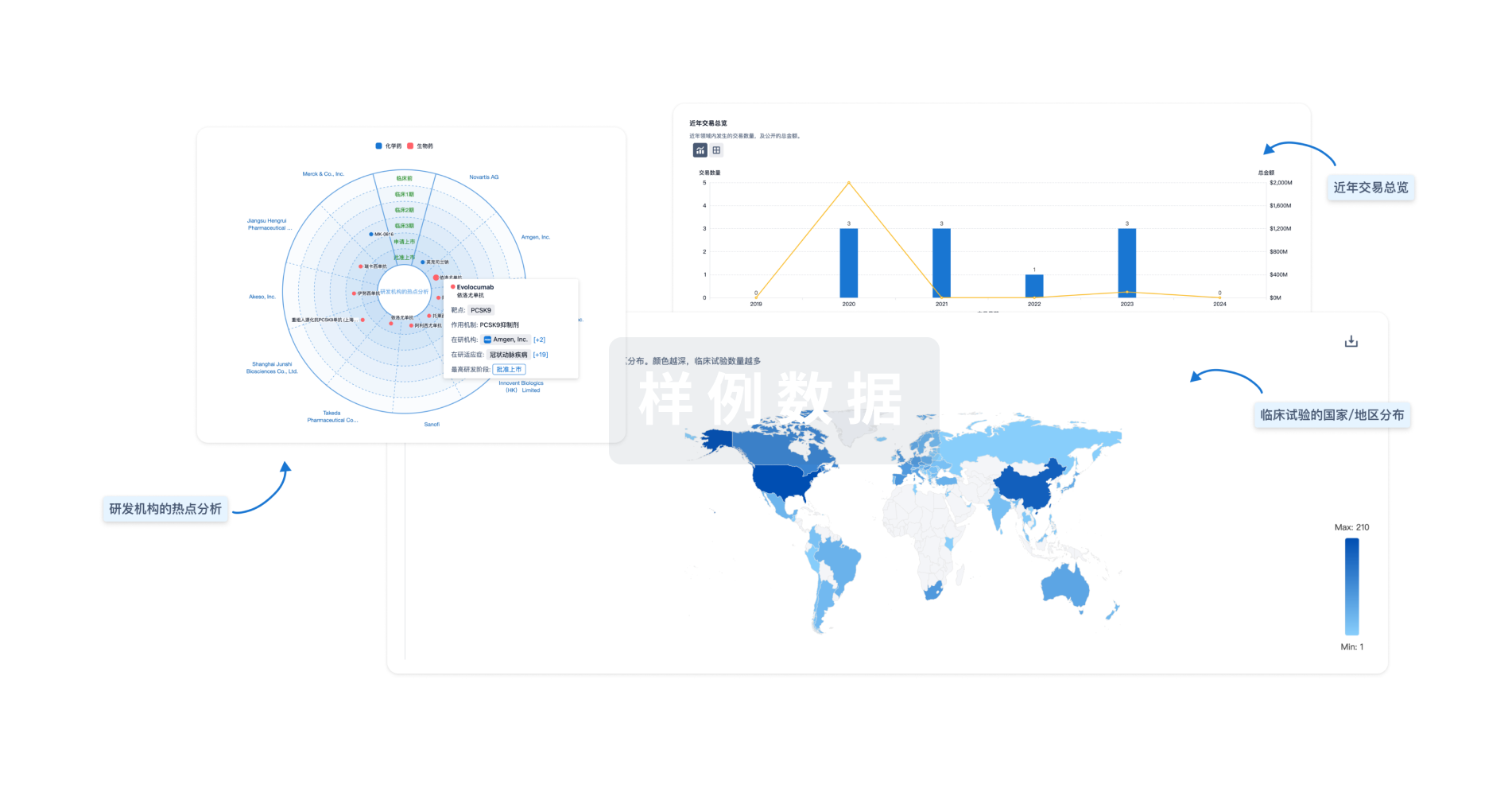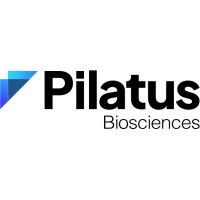预约演示
更新于:2025-05-07
CD36
更新于:2025-05-07
基本信息
别名 CD36、CD36 antigen (collagen type I receptor, thrombospondin receptor)、CD36 molecule + [16] |
简介 Multifunctional glycoprotein that acts as a receptor for a broad range of ligands. Ligands can be of proteinaceous nature like thrombospondin, fibronectin, collagen or amyloid-beta as well as of lipidic nature such as oxidized low-density lipoprotein (oxLDL), anionic phospholipids, long-chain fatty acids and bacterial diacylated lipopeptides. They are generally multivalent and can therefore engage multiple receptors simultaneously, the resulting formation of CD36 clusters initiates signal transduction and internalization of receptor-ligand complexes. The dependency on coreceptor signaling is strongly ligand specific. Cellular responses to these ligands are involved in angiogenesis, inflammatory response, fatty acid metabolism, taste and dietary fat processing in the intestine (Probable). Binds long-chain fatty acids and facilitates their transport into cells, thus participating in muscle lipid utilization, adipose energy storage, and gut fat absorption (By similarity) (PubMed:18353783, PubMed:21610069). Mechanistically, binding of fatty acids activates downstream kinase LYN, which phosphorylates the palmitoyltransferase ZDHHC5 and inactivates it, resulting in the subsequent depalmitoylation of CD36 and caveolar endocytosis (PubMed:32958780). In the small intestine, plays a role in proximal absorption of dietary fatty acid and cholesterol for optimal chylomicron formation, possibly through the activation of MAPK1/3 (ERK1/2) signaling pathway (By similarity) (PubMed:18753675). Involved in oral fat perception and preferences (PubMed:22240721, PubMed:25822988). Detection into the tongue of long-chain fatty acids leads to a rapid and sustained rise in flux and protein content of pancreatobiliary secretions (By similarity). In taste receptor cells, mediates the induction of an increase in intracellular calcium levels by long-chain fatty acids, leading to the activation of the gustatory neurons in the nucleus of the solitary tract (By similarity). Important factor in both ventromedial hypothalamus neuronal sensing of long-chain fatty acid and the regulation of energy and glucose homeostasis (By similarity). Receptor for thrombospondins, THBS1 and THBS2, mediating their antiangiogenic effects (By similarity). Involved in inducing apoptosis in podocytes in response to elevated free fatty acids, acting together with THBS1 (By similarity). As a coreceptor for TLR4:TLR6 heterodimer, promotes inflammation in monocytes/macrophages. Upon ligand binding, such as oxLDL or amyloid-beta 42, interacts with the heterodimer TLR4:TLR6, the complex is internalized and triggers inflammatory response, leading to NF-kappa-B-dependent production of CXCL1, CXCL2 and CCL9 cytokines, via MYD88 signaling pathway, and CCL5 cytokine, via TICAM1 signaling pathway, as well as IL1B secretion, through the priming and activation of the NLRP3 inflammasome (By similarity) (PubMed:20037584). Selective and nonredundant sensor of microbial diacylated lipopeptide that signal via TLR2:TLR6 heterodimer, this cluster triggers signaling from the cell surface, leading to the NF-kappa-B-dependent production of TNF, via MYD88 signaling pathway and subsequently is targeted to the Golgi in a lipid-raft dependent pathway (By similarity) (PubMed:16880211).
(Microbial infection) Directly mediates cytoadherence of Plasmodium falciparum parasitized erythrocytes and the internalization of particles independently of TLR signaling. |
关联
18
项与 CD36 相关的药物靶点 |
作用机制 CD36 inhibitors |
在研机构 |
原研机构- |
非在研适应症- |
最高研发阶段临床1期 |
首次获批国家/地区- |
首次获批日期1800-01-20 |
靶点 |
作用机制 CD36 inhibitors |
在研适应症- |
非在研适应症- |
最高研发阶段临床前 |
首次获批国家/地区- |
首次获批日期1800-01-20 |
靶点 |
作用机制 CD36 inhibitors |
非在研适应症- |
最高研发阶段临床前 |
首次获批国家/地区- |
首次获批日期1800-01-20 |
8
项与 CD36 相关的临床试验CTR20192236
注射用丹酚酸B在中国健康成人受试者的单次与多次用药安全性及耐受性的I期临床研究
1. 主要目的: 评价注射用丹酚酸B单次与多次用于中国健康成人受试者的安全性及耐受性。 2. 次要目的,探索注射用丹酚酸B: (1)皮肤试验方法。 (2)单次与多次用于中国健康成人受试者的药代动力学特征。 (3)单次与多次用于中国健康成人受试者的药效学特征。 (4)单次用于中国健康成人受试者的经肾排泄特征。
开始日期2019-11-12 |
申办/合作机构  南京虹桥医药技术研究所有限公司 南京虹桥医药技术研究所有限公司 [+1] |
NCT00113334
A Phase 1b/2 Study of ABT-510 (Thrombospondin Analogue) in Patients With Advanced Head and Neck Cancer
The goals of this clinical research study are to see how individuals with advanced head and neck cancer respond to treatment with the new drug thrombospondin (ABT-510) and to learn how effective it is in destroying cancer cells. The safety of ABT-510 and the effect ABT-510 has on cells in the body will also be studied.
开始日期2005-04-01 |
NCT00602199
A Phase II Study of Anti-angiogenesis Therapy for Metastatic Melanoma Using ABT-510
RATIONALE: ABT-510 may stop the growth of melanoma by blocking blood flow to the tumor.
PURPOSE: This phase II trial is studying how well giving ABT-510 works in treating patients with metastatic melanoma.
PURPOSE: This phase II trial is studying how well giving ABT-510 works in treating patients with metastatic melanoma.
开始日期2004-11-01 |
申办/合作机构  Mayo Clinic Mayo Clinic [+1] |
100 项与 CD36 相关的临床结果
登录后查看更多信息
100 项与 CD36 相关的转化医学
登录后查看更多信息
0 项与 CD36 相关的专利(医药)
登录后查看更多信息
7,964
项与 CD36 相关的文献(医药)2025-12-01·Molecular Genetics and Genomics
Analysis of regulatory patterns of NLRP3 corpuscles and related genes and the role of macrophage polarization in atherosclerosis based on online database
Article
作者: Wu, Tao ; Shen, Wen ; Ke, Ben ; Liu, Qiang
2025-12-01·Immunologic Research
Prognostic value of myeloid-derived suppressor-like cells in acute myeloid leukemia: insights from immunophenotyping and clinical correlations
Article
作者: Figueiró, Fabrício ; Daudt, Liane E ; Dias, Camila K ; Paz, Alessandra A ; Nunes, Vitória B S ; Portela, Pâmela ; Alegretti, Ana P ; Calvache, Ebellins T ; Farias, Mariela G ; Meirelles, Maria F ; Michalowski, Mariana B ; Sant'Ana, Alexia N
2025-09-01·Journal of Pharmaceutical and Biomedical Analysis
Black rice bran improved lipid metabolism in hyperlipidemia mice via steroid hormone biosynthesis and PPAR signaling pathway
Article
作者: Tan, Kevin Shyong Wei ; Li, Xiang ; Wang, Li
74
项与 CD36 相关的新闻(医药)2025-05-05
·生物探索
引言我们身体里的每个细胞都是一个微缩宇宙,里面运行着无数精密复杂的系统。这些系统的核心,是千姿百态的蛋白质(Proteins),它们就像宇宙中的不同星球,执行着各自独特的任务,但更重要的是,它们通过相互作用(Protein-protein interactions)形成复杂的蛋白质网络(Protein networks),共同维持着宇宙的和谐运转。这些蛋白质“朋友圈”的面貌,直接决定了细胞的功能和状态,一旦出现问题,往往是疾病的开端。研究人员多年来绘制了大量蛋白质相互作用图谱,试图揭示生命的奥秘。然而,这些图谱大多像是一张笼统的世界社交地图,无法告诉你具体某个城市(比如肝脏或大脑)里的蛋白质关系是怎样的。因为蛋白质的“社交圈”并非一成不变,它会随着所处的组织(Tissue)、细胞类型甚至细胞状态而高度特异化(Tissue specificity)。缺失了这种“情境”信息,我们对疾病发生机制的理解就像是隔靴搔痒。有没有可能绘制一张真正精细到组织的蛋白质“朋友圈”地图呢?5月2日发表在《Nature Biotechnology》上的重磅研究“A tissue-specific atlas of protein–protein associations enables prioritization of candidate disease genes”,正带来了这样的突破。研究团队创造性地利用大量数据——来自11种人体组织的7,811份蛋白质组学样本的蛋白质丰度信息,通过分析蛋白质在不同样本中的共丰度(Protein coabundance),构建了一份前所未有的组织特异性蛋白质关联图谱(A tissue-specific atlas of protein-protein associations)。令人惊喜的是,这项研究发现蛋白质共丰度是一个极其强大的预测指标,它能非常准确地识别蛋白质之间的关联,甚至在某些方面优于传统的蛋白质共分级(Protein cofractionation)方法。更重要的是,图谱清晰地揭示了蛋白质关联存在广泛的组织特异性——据估计,超过25%的关联是特定于某个组织的!而且,这种差异的驱动力远不止简单的基因表达,更多来自于组织或细胞特有的细胞组分(Cellular components)变化。这张详细的图谱不仅能帮助我们更深入地理解不同组织中细胞结构的独特组成,更提供了一个强大的新工具:它可以帮助我们以前所未有的精度,在复杂的遗传关联位点中,优先筛选出最可能导致疾病的那个“致病基因”(Disease gene),特别是在特定组织相关的疾病中。海量样本汇聚:构建蛋白质关联的基石要绘制一张宏大的图谱,首先需要海量的数据。这项研究收集了来自50项已发表研究的蛋白质组学数据,这些研究涵盖了14种人类组织。样本总数高达7,811份,其中包括来自肿瘤的5,726份样本和来自邻近健康组织的2,085份样本。这些样本为研究团队提供了丰富的蛋白质丰度信息。为了进行更全面的比较,研究人员还为其中约2,900份肿瘤样本和722份健康样本收集了配对的mRNA表达数据。研究人员利用蛋白质共丰度来估计蛋白质对(Protein pair)之间发生关联的可能性。具体来说,他们计算了同一研究中至少在30个样本中都能检测到的一对蛋白质的丰度曲线之间的皮尔森相关系数(Pearson correlation)。相关性越强,说明这对蛋白质共丰度的趋势越一致,它们也就越有可能存在功能关联。为了将这些相关系数转化为易于理解的概率,研究团队使用了逻辑模型(Logistic model)。他们利用已知的稳定蛋白质复合体(比如来自CORUM数据库的数据)作为阳性样本(Ground-truth positives),也就是已知有相互作用的蛋白质对。通过训练逻辑模型,研究人员可以将任何一对蛋白质的共丰度相关系数转化为一个介于0到1之间的概率,表示这对蛋白质发生关联的可能性。这项研究总共汇集了来自不同研究的超过110万个蛋白质对的关联概率,这些数据为构建组织特异性图谱奠定了坚实的基础。共丰度:预测蛋白质关联的有力工具那么,利用蛋白质共丰度来预测蛋白质关联,效果究竟如何呢?研究团队将这种方法与另外两种常用方法进行了比较:mRNA共表达和蛋白质共分级(Protein cofractionation)。蛋白质共分级是一种通过分离细胞组分并分析蛋白质在不同组分中的丰度来推断相互作用的方法,通常被认为是预测物理相互作用的黄金标准之一。为了评估这些方法的性能,研究人员同样使用CORUM数据库中的已知蛋白质复合体成员作为阳性样本,计算了受试者工作特征曲线下面积(Area Under the Curve, AUC)。AUC是一个衡量分类器性能的指标,值越高表示预测准确性越高。结果显示,基于蛋白质共丰度的关联概率在回收已知蛋白质复合体成员方面的表现最优,其平均AUC达到了0.80(标准误 ± 0.01)。这显著优于蛋白质共分级数据(平均AUC 0.69 ± 0.01)和mRNA共表达数据(平均AUC 0.70 ± 0.01)。这一发现非常有意义,它表明仅仅通过蛋白质在不同样本中的丰度变化,就能相当准确地推断出它们的功能关联。更有趣的是,研究人员尝试将mRNA和蛋白质丰度数据结合起来,但这种组合并没有显著提高召回已知复合体成员的性能(平均AUC 0.82 ± 0.01),与单独使用蛋白质共丰度相比,差异不具有统计学意义(P = 0.15)。此外,即使在计算蛋白质共丰度估计之前,先从蛋白质丰度中去除基因表达的影响,得到的AUC也仅轻微下降到0.78(标准误 ± 0.01),差异也不具有统计学意义(P= 0.18)。这强烈暗示,蛋白质共丰度的预测能力主要来自于转录后过程(Post-transcriptional processes)的影响,而不是简单的基因表达水平变化。这意味着,蛋白质的降解、修饰或复合体组装动力学等因素,可能比基因表达本身更能驱动蛋白质之间的共丰度关系,进而反映它们的功能关联。图谱初显:组织特异性关联的面貌既然蛋白质共丰度能够有效地预测蛋白质关联,并且主要反映了转录后过程,那么这些关联是否具有组织特异性呢?研究人员首先通过基因表达数据确认,蛋白质关联概率并非简单地由细胞类型组成(Cell-type composition)差异引起。随后,他们分析了来自所有研究的1,115,405个关联概率,发现来自同一组织的重复队列通常会聚集在一起。例如,来自不同血液样本研究的数据会聚类,来自不同脑组织样本的数据会聚类,来自不同肝脏样本和肺脏样本的数据也表现出类似的聚类模式。这有力地证明了组织来源是导致不同研究队列之间蛋白质关联差异的主要驱动因素。在比较同一组织(AUC 0.71 ± 0.01)和不同组织(AUC 0.56 ± 0.00)对恢复组织特异性关联的能力时,这种差异在所有组织中都具有统计学意义(P < 0.05)。基于不同队列聚类的结果,研究团队将来自同一组织的重复队列的关联概率进行聚合,为11个人体组织计算了单一的组织级关联得分(Association scores)。这种聚合方法被证明是有效的,因为它在恢复已知蛋白质相互作用方面的表现优于绝大多数单个队列(P = 1.3 × 10⁻¹⁰)。值得注意的是,来自肿瘤样本计算得到的关联得分在预测已知蛋白质相互作用方面优于来自健康组织样本的得分(肿瘤AUC 0.87 ± 0.01,健康AUC 0.82 ± 0.01,差异具有统计学意义 P = 8.3 × 10⁻⁵)。这可能是因为肿瘤样本由于遗传异质性等因素,样本间的变异性更大,反而有助于识别更稳健的共丰度模式。尽管如此,肿瘤来源的得分仍然能够很好地恢复健康组织的组织特异性关联(同一健康组织AUC 0.74 ± 0.02,其他健康组织AUC 0.53 ± 0.01,差异具有统计学意义 P = 5.9 × 10⁻⁵)。这些分析共同表明,基于蛋白质共丰度计算的组织级关联得分是可重复的,并且能够代表蛋白质关联在特定组织中的情况。最终,研究人员构建了一份包含1.16亿个蛋白质对在11种人体组织中的关联得分图谱。平均而言,每个组织包含约5600万个蛋白质对的关联得分,其中约1000万个蛋白质对被认为是“可能关联”(Likely associated,得分大于0.5),约49万个蛋白质对被认为是“高可信关联”(Confident associations,得分大于0.8)。这些关联在不同组织中的分布差异很大,只有约99,103个蛋白质对在所有11个组织中都被认为是可能关联的。这初步揭示了蛋白质关联具有显著的组织特异性。组织间的差异:远不止基因表达一个长期存在的观点认为,组织间蛋白质相互作用的差异主要源于基因表达水平的差异——如果一个蛋白质在某个组织中不表达,那它自然也无法参与该组织中的相互作用。这项研究证实,在特定组织中能被检测到的蛋白质,其在同一组织中的表达水平普遍高于其他组织(P = 1.3 × 10⁻⁶)。然而,研究团队发现,组织间(可能关联)关联差异中,只有最高7%可以通过基因表达水平差异来解释,而且这部分解释力主要来自于蛋白质在某些组织中完全检测不到的情况。这进一步支持了先前的发现,即蛋白质共丰度主要受转录后过程驱动,组织间的关联差异并不仅仅是基因表达的简单反映。为了量化组织特异性关联的比例,研究人员发现,在比较同一健康组织和肿瘤组织的重复样本时,约46.3%的可能关联(得分大于0.5)和90.2%的高可信关联(得分大于0.8)在重复样本中仍然被认为是可能关联的。而在比较不同组织之间的关联时,这些比例分别下降到32.9%和54.6%。基于重复样本与不同组织之间的这些概率差异,研究人员估计,在可能的关联中,有18.8%到34.0%(四分位数间距)是组织特异性的。考虑到最高7%的可能关联因为基因表达差异而在其他组织中未被检测到,研究最终估计,超过25.8%(即18.8% + 7%)的可能关联是组织特异性的。这意味着,组织间的蛋白质“朋友圈”不仅面貌各异,而且这种差异的很大一部分是由基因表达以外的因素驱动的,这些因素可能包括组织或细胞类型特有的蛋白质修饰、定位、稳定性或与特定细胞器、结构的关联。细胞组分:组织特异性关联的关键驱动力组织间的蛋白质关联差异是由什么决定的?研究人员通过分析不同组织中可能关联的共享程度来探索这个问题。他们发现,与所有可能关联(平均Jaccard指数 0.19)相比,如果仅限于已知的高通量实验(如酵母双杂交HuRI,Jaccard指数 0.30;AP BioPlex,Jaccard指数 0.41)检测到的相互作用,或者仅限于已知生物学途径(如Reactome,Jaccard指数 0.48)、信号通路(如SIGNOR,Jaccard指数 0.32)中的相互作用,或者物理相互作用(如STRING得分大于400,Jaccard指数 0.56),组织间的相似性会有所增加。如果仅限于人类蛋白质复合体(如CORUM,Jaccard指数 0.74),组织间的相似性则最高。这意味着,已知的蛋白质相互作用,特别是稳定复合体中的相互作用,在不同组织间通常是共享的。然而,研究人员也发现,那些在不同组织中变化较大的关联,往往与特定的细胞组分(Cellular components)相关。例如,大脑组织中与突触(Synapse)相关的组分、喉部组织中与肌肉纤维结构相关的组分、肺部组织中与运动纤毛(Motile cilia)相关的组分以及肝脏组织中与过氧化物酶体(Peroxisomes)相关的组分,其蛋白质关联在不同组织间表现出强烈的差异性。这表明,组织特异性或细胞类型特异性的细胞组分是驱动组织间蛋白质关联差异的重要因素,而且这种差异独立于简单的基因表达差异。研究团队进一步探索了图谱中细胞类型特异性关联的例子。以AP2衔接蛋白复合体(AP2 adaptor complex)为例,它在所有细胞中都具有普遍功能,但在神经元中也有特异性功能。图谱显示,AP2复合体亚基在所有组织中都是共丰度的(平均关联得分0.80)。然而,在与AP2复合体关联且已知与之相互作用(STRING得分大于400)的91个蛋白中,51个突触蛋白(SynGO数据库中的蛋白)在大脑中的关联得分(平均0.54)高于其他组织(平均0.48 ± 0.00,P = 6.7 × 10⁻⁶)。相反,非突触蛋白在大脑中的关联得分(平均0.33)低于其他组织(平均0.43 ± 0.00,P = 1.1 × 10⁻²¹)。这生动地展示了即使是普遍存在的蛋白质复合体,其与不同功能蛋白质的关联也可能具有组织或细胞类型特异性。图谱还能揭示疾病相关的细胞类型特异性关联。例如,血红蛋白(Hemoglobin)蛋白与贫血(Anemia)相关,在图谱中,它们与贫血相关蛋白的可能关联只在血液组织中出现。同样,乳糜微粒(Chylomicron)亚基与克罗恩病(Crohn's disease)相关,它们与克罗恩病相关蛋白的可能关联只在结肠(Colon)组织中出现。纤维蛋白原(Fibrinogen)亚基与肝脏疾病相关,它们与肝脏疾病相关蛋白的肝脏特异性可能关联也被发现。这些例子表明,这份关联图谱可以用来研究蛋白质复合体的组织特异性功能以及疾病基因在特定情境下的关联。研究人员还将这种分析推广到更广阔的层面,系统性地绘制了性状(Traits,基于GWAS数据)与细胞组分之间的关系图谱。他们发现,在所有组织中都得分较高的关系主要涉及核心细胞组分,如核糖体(Ribosome)和剪接体(Spliceosome)(72%的关系相对平均得分大于1.75)。而那些在不同组织中变异最大的关系(变异系数大于0.4)往往涉及组织特异性结构,比如突触组分(Synaptic components)(61%的关系属于这一类)。这些发现再次印证了细胞组分,特别是组织特异性组分,在决定蛋白质集合的组织特异性相关性中扮演的关键角色。疾病基因“C位”:基于图谱的精准排序理解蛋白质关联的组织特异性如何应用于疾病研究?研究团队利用这份图谱来优先排序(Prioritize)疾病相关基因,特别是那些位于遗传关联位点(Loci)的候选基因。已知与疾病基因直接相互作用的蛋白通常更可能是致病基因,并且在成功的药物靶点中富集。为了更深入地探索这一点,研究人员构建了一个针对精神分裂症(Schizophrenia, SCZ)相关基因的大脑相互作用网络,旨在优先排序大脑中那些得分较高且涉及SCZ相关基因的关联。研究始于369个通过GWAS研究与SCZ关联的基因(“起始基因”,L2G得分大于等于0.5)。他们计算了这些起始基因与各自组织中得分最高的25个性状和细胞组分之间的关系。随后,研究人员筛选出那些包含一个SCZ起始基因和一个SCZ相关基因的蛋白质对,并要求它们在大脑中的关联得分高于该组织得分分布的97%分位数(在大脑中平均得分0.73)。由此得到了SCZ相关基因的组织特异性关联网络。令人鼓舞的是,移除SCZ起始基因后,该大脑网络中剩余的基因仍然富集于与SCZ相关的基因,这些证据来自小鼠SCZ表型(Mouse phenotypes)(BH校正P值 1.5 × 10⁻⁵)、SCZ药物靶点(BH校正P值 9.8 × 10⁻⁵)以及GWAS中关联较弱的变异(BH校正P值 1.0 × 10⁻⁷)。与其他组织相比,这种富集性是特定于大脑的。这表明,所提出的方法提供了一种系统性地优先排序组织特异性性状疾病基因的途径。为了进一步验证这些预测的SCZ相关基因关联,研究人员汇编了一个实验验证过的人类大脑相互作用数据集,这些数据主要来自使用人类大脑细胞(AP-MS或CoIP-MS)进行的Pull-down实验。该数据集包含了7,887个与30个“诱饵蛋白”(Bait proteins)相关的人类大脑相互作用。研究人员筛选出该数据集中与SCZ相关的诱饵蛋白,并将组织特异性SCZ相关基因网络过滤到只包含至少一个诱饵蛋白的关联。结果发现,这些SCZ相关基因的关联强烈富集于与SCZ相关诱饵蛋白的Pull-down相互作用中,尤其是在大脑中(log BH校正P值高达84.3),远远高于其他组织(平均log BH校正P值仅为1.8)。这有力地证明了该研究预测的大脑SCZ相关基因关联得到了实验验证,并且确实富集于SCZ相关的互作蛋白。整合多源证据:深入理解并发现新靶点在实验验证的基础上,研究人员从优先排序的大脑SCZ相关基因关联中,筛选出那些也通过Pull-down研究发现的相互作用,构建了一个包含205个已验证的大脑SCZ相关基因相互作用网络。为了简化并突出重点,他们进一步将网络限制在具有先前证据的突触(SynGO)基因。这个可视化网络包含56个蛋白质,通过66个已验证的大脑相互作用连接到3个诱饵蛋白。这些蛋白质中包括3个SCZ药物靶点(临床阶段2或更高)、12个与小鼠SCZ相关的蛋白(IMPC得分大于等于0.5)以及15个与SCZ相关但先前证据较弱的蛋白(OTAR L2G得分小于0.5)。令人惊讶的是,在这205个已验证的相互作用中,只有4个在主要蛋白质相互作用数据库中被报告过。这个网络富集了典型的神经元功能和SCZ相关的细胞组分基因群,比如突触后细胞骨架(Postsynaptic cytoskeleton)(BH校正P值 2.3 × 10⁻⁸)和网格蛋白包被囊泡(Clathrin-coated vesicles)(BH校正P值 9.4 × 10⁻¹⁴)。特别是,与网格蛋白囊泡相关的组分,该网络连接了AP2复合体的所有亚基和网格蛋白与HCN1蛋白的相互作用。有研究表明,HCN通道与TRIP8b直接相互作用,TRIP8b调节HCN通道的运输,并主要与AP2复合体关联。鉴于中间白蛋白阳性(PV)神经元与SCZ之间的已知联系,这些观察结果提示AP2和网格蛋白可能参与了与SCZ相关的PV神经元HCN通道运输的特定障碍。为了提出已验证SCZ相关基因大脑相互作用的潜在界面模型,研究人员利用AlphaFold2预测了205个蛋白质相互作用的结构,包括可视化网络中的所有相互作用。这些预测模型得到的相互作用置信度(pDockQ得分平均0.28)高于CORUM(平均0.13)和HuMAP(平均0.25)中已知复合体成员的模型。总共识别出15个中等置信度的相互作用(界面预测模板建模ipTM得分大于0.5)。这其中包括所有三个14-3-3蛋白(YWHAG, YWHAH, YWHAZ)与HCN1的大脑特异性结合(平均关联得分0.82)。这三个模型的预测界面重叠,位于HCN1的C端无序区域(残基775-802),包含一个预测的14-3-3结合位点(中心位于S789,预测结合位点ipTM得分平均0.75)。这一结合位点已通过Pull-down实验验证,且已知14-3-3蛋白与HCN1的结合依赖于S789的磷酸化,这种相互作用可能抑制HCN1的降解。最后,该网络还包含15个位于与SCZ遗传关联位点的基因,它们作为致病基因的证据相对较弱。考虑到它们与SCZ相关基因的相互作用,这些基因更有可能因其功能作用而成为潜在的致病基因。例如,AP2B1, ATP2B2和SYNGAP1这三个基因的L2G得分(分别为0.457, 0.264和0.251)低于研究设定的0.5截止值,但由于它们与SCZ相关基因的相互作用而被优先排序。另一个例子是PAFAH1B1,虽然其L2G得分较低,但它在突触组分中富集,且与另一种突触蛋白RHOA存在相互作用。尽管PAFAH1B1作为致病基因的证据较弱,但其与大脑疾病(如抑郁症)的关联以及其在突触的特异性位置和表达,使得它在抑郁症相关的优先级排序中被提升。这些例子表明,结合遗传学数据、组织特异性网络和AlphaFold2结构预测,可以构建一个整合的网络,增强对疾病机制的理解并助力靶点优先排序。所预测的疾病-基因关联倾向于组织特异性,这可能意味着所提出的靶点也更安全。绘制涵盖人体所有组织的蛋白质相互作用图谱,一直是一个巨大的挑战。这项研究利用大规模蛋白质组学样本的蛋白质共丰度,构建了一份全面的组织特异性蛋白质关联图谱,包含了1.16亿个蛋白质对在11个组织中的关联得分。研究证实,蛋白质共丰度是预测蛋白质功能关联的有力工具,其准确性甚至优于蛋白质共分级和mRNA共表达。这份图谱成功地重建了已知的蛋白质复合体和更大的细胞结构组织,并揭示了蛋白质关联存在显著的组织特异性,其中超过25%的关联是组织特异性的,而基因表达差异仅能解释其中不到7%。组织特异性的细胞组分,如突触,被发现是驱动组织间差异的主要因素。该图谱不仅能揭示蛋白质复合体和细胞组分的组织特异性功能,还能关联性状与细胞组分,并为疾病基因的优先排序提供依据。研究以精神分裂症为例,展示了如何利用图谱构建SCZ相关基因在大脑中的相互作用网络,并通过Pull-down实验和AlphaFold2结构预测对这些关联进行验证。结果显示,通过结合多种证据来源,可以有效地筛选出更可能为致病基因的候选者,即使他们在遗传关联位点上的证据相对较弱。这种方法为理解复杂疾病(特别是神经系统疾病)的分子机制提供了新的视角,并为发现更具组织特异性的药物靶点奠定了基础。当然,共丰度推断的“蛋白质关联”并非都是直接的物理相互作用,这是一种功能层面的关联,它可能受到蛋白质复合体稳定性、蛋白质定位、翻译后修饰等多种因素的影响。未来的研究可以进一步整合更多数据源(如蛋白质修饰组学、空间蛋白质组学等)以及更先进的计算方法,来完善这份图谱,并区分不同类型的蛋白质关联。尽管如此,这份组织特异性蛋白质关联图谱已经为我们提供了一张前所未有的蛋白质“朋友圈”地图,有望加速对复杂疾病机理的理解,并为精准医疗和药物开发带来新的突破。参考文献Laman Trip DS, van Oostrum M, Memon D, Frommelt F, Baptista D, Panneerselvam K, Bradley G, Licata L, Hermjakob H, Orchard S, Trynka G, McDonagh EM, Fossati A, Aebersold R, Gstaiger M, Wollscheid B, Beltrao P. A tissue-specific atlas of protein-protein associations enables prioritization of candidate disease genes. Nat Biotechnol. 2025 May 2. doi: 10.1038/s41587-025-02659-z. Epub ahead of print. PMID: 40316700.声明:本文仅用于分享,不代表平台立场,如涉及版权等问题,请尽快联系我们,我们第一时间更正,谢谢!往期热文:Cell | 颠覆认知!不是被动扩散,CD36介导内吞才是许多“大块头”药物入胞的秘密通道Nature Methods | mScarlet3-H:红色荧光蛋白的新一代王者!Nature Methods | 告别“平面时代”!光学显微镜如何带你看清3D细胞世界的秘密?Nature | 帕金森病新曙光!iPS细胞人体试验结果揭晓,安全有效性初显!Cell | 实时见证“基因之吻”:Oligo-LiveFISH高精度追踪增强子-启动子动态互作Nature Biotechnology | 重磅综述:不止CAR-T!唤醒免疫“特种部队”,工程化先天细胞开启抗癌新纪元
基因疗法
2025-05-05
·生物探索
引言在体内深处,数以万亿计的微生物正在忙碌地生活。它们组成了肠道菌群,一个复杂而充满活力的“第二基因组”,对消化、免疫甚至情绪都起着至关重要的作用。长期以来,研究人员一直在探索这个微观世界与人类健康之间的联系,我们知道不同种类的细菌与各种健康状况有关。但即使是同一种类的细菌,它们内部也存在巨大的差异,就像我们人类一样,虽然同属智人物种,但每个个体都是独特的。这些更精微的、菌株水平(strain-level)的差异,是否也隐藏着与健康和我们生活环境相关的秘密?它们如何分布在全球各地?又如何影响着不同人群的健康?4月30日一项发表在《Cell》上的重磅研究“Global genetic structure of human gut microbiome species is related to geographic location and host health”,以前所未有的规模和深度,回答了这些问题。这项研究汇集了来自全球 42个国家 的 32,152份 人类肠道样本,构建了数百种肠道细菌的菌株系统发育树(strain phylogenies)。研究发现,肠道里特定菌株的组成,竟然与居住的地理位置紧密相连,仿佛肠道居民也有自己的“护照”。更令人兴奋的是,这些看似细微的菌株差异,被发现与一系列重要的人类表型和疾病存在显著关联,从婴儿的生长发育,到老年人的健康衰老,甚至是像黑色素瘤和前列腺癌这样的严重疾病。 菌株分支在特定人群或疾病状态下表现出惊人的富集。这项研究不仅仅是增加了我们对肠道菌群的认识,它正在颠覆我们过去仅停留在物种层面的理解,揭示了菌株多样性如何作为连接地理、传播和人类健康的桥梁。肠道菌群“有护照”?菌株分布与地理位置紧密相关这项研究首先确认了一个重要发现:我们肠道里同一种细菌的不同菌株,它们的地理分布并非随意,而是与宿主的地理位置高度相关。通过将样本的地理距离与对应菌株的系统发育距离进行比较,研究发现,在分析的583个物种中,有456个表现出显著的地理差异(Mantel检验,FDR < 0.05)。这意味着,来自不同国家的人,他们肠道里同一种细菌的菌株往往在遗传上差异更大。有些物种的地理分层尤其明显,比如Eubacterium ventriosum,其系统发育树与地理位置的相关性高达0.57(分析了2582个样本)。又比如Lachnospiraceae家族的一个未知物种,相关性为0.46(分析了6553个样本),而Ruminococcus torques的相关性为0.38(分析了7063个样本)。相比之下,像Alistipes onderdonkii这样的物种,其菌株地理分层就非常弱,相关性仅为0.02(分析了12042个样本)。进一步分析发现,Lachnospiraceae家族的物种整体上表现出更高的地理分层效应(基因集富集分析,NES=1.44,FDR=0.01)。这提示我们,某些特定的微生物类群可能与宿主共享了更强的进化历史,或者受到了地理环境的更深刻影响。“社交达人” vs. “宅家菌”:传播能力塑造地理格局那么,为什么有些菌株全球分布广泛,有些却高度局限在特定地区呢?研究人员提出了一个有趣的假说:这可能与菌株的水平传播(horizontal transmission)能力有关。那些更容易在人与人之间传播的菌株,可能更容易跨越地理障碍,从而降低其地理分层。为了验证这一点,研究团队估计了这583个物种在同一国家但不同研究人群中的菌株共享率(作为传播性的代理指标)。结果发现,物种的传播性与地理分层效应呈负相关(Pearson相关系数为-0.21,p值为3×10^-7)。也就是说,传播性越强的物种,其菌株地理差异越小。这个发现非常直观:那些喜欢“出门旅行”的菌株,自然不会只待在同一个地方,而那些“宅家”的菌株,则更容易在特定地理区域内形成独特的遗传群体。这种传播能力与地理分层的反向关系,为理解肠道微生物的生物地理学(biogeography)提供了新的视角。菌株记录我们的生命轨迹,特别是年龄除了地理位置,肠道菌株的差异还与广泛的人类表型相关。在本次分析的256个表型中,年龄是与菌株系统发育差异关联最普遍的因素,共关联了253个物种的系统发育。其次是身体质量指数(BMI),关联了12个物种;性别关联了6个物种。一个最重要的年龄相关发现是关于长双歧杆菌(Bifidobacterium longum)。研究发现,在欧洲和非洲样本中,长双歧杆菌的系统发育树都呈现出明显的婴儿特异性菌株(infant-specific clades)。系统发育分析显示,婴儿(定义为小于2岁)和成人之间存在清晰的菌株分离。研究进一步揭示,婴儿特异性菌株中包含两个主要分支:一个主要富集了B. longum subsp. infantis的参考基因组,在欧洲和非洲婴儿中都有出现;另一个较小的分支富集了B. longum subsp. suis的参考基因组,在非洲样本中显著富集(泛化线性模型GLM在非洲样本中的log-odds值为-3.32,p值为8.13×10^-5),这与先前在孟加拉国婴儿中观察到的结果一致。通过平均核苷酸同一性(average nucleotide identity, ANI)分析和碳水化合物活性酶(carbohydrate-active enzymes, CAZymes)预测,研究证实了不同分支在代谢能力上的差异,例如婴儿特异性菌株富集了分解母乳中复杂糖类所需的酶,这与它们在婴儿期独特的饮食结构相适应。这些结果有力地支持了不同生命阶段对应独特的菌株组成。探索“长寿菌株”:瘤胃球菌与衰老及胆汁酸随着年龄的增长,肠道菌群也会发生变化。研究发现,在亚洲样本中,有5个物种的系统发育树中存在富集在百岁老人(>90岁)中的菌株分支,其中就包括瘤胃球菌(Ruminococcus gnavus)。特别是在一项专注于中国百岁老人的研究(XuQ_2021)中,瘤胃球菌的一个分支在百岁老人中显示出很强的富集信号(elpd_diff值为-65.5),该研究中148位非百岁老人中有47位是百岁老人。即使仅使用XuQ_2021研究的数据,该关联也得到了证实(elpd_diff值为-20.1,96个样本中有47个非百岁老人是百岁老人)。在包含所有亚洲研究的样本中,这种富集在老年个体中的菌株分支在系统发育上与年龄显著相关(泛化线性混合模型GLMER PAsian_tree值为1.75×10^-11)。更令人振奋的是,这种关联在欧洲样本中也得到了复制(elpd_diff值为-34.99)。在包含所有欧洲样本的系统发育树中,富集在老年个体中的菌株分支的平均年龄显著更高(GLMER,log-odds age = 0.03,p值为1.88×10^-9)。这表明,瘤胃球菌的特定菌株倾向于更常见于老年个体,且这种趋势独立于地理位置。瘤胃球菌此前已被发现与炎症和胆汁酸代谢有关。研究利用荷兰队列(ZhernakovaA_2016 和 KurilshikovA_2019)中有限的胆汁酸数据(共69个样本,其中13个在该老年富集分支中),发现在该分支中初级胆汁酸(primary bile acids)的丰度更高,包括胆酸(cholic acid, CA,FDR=1.39×10^-4)和鹅去氧胆酸(chenodeoxycholic acid, CDCA,FDR=2.33×10^-4)。对瘤胃球菌宏基因组组装基因组(metagenome-assembled genomes, MAGs)的功能分析进一步揭示,该老年富集分支中的菌株显著耗尽了产生7β-羟基类固醇脱氢酶(7βHSDH,FDR=3×10^-8)的基因,而富集了产生3α-羟基类固醇脱氢酶(3αHSDH,FDR=0.02)、BaiA(FDR=0.02)和胆盐水解酶(BSH,FDR=3×10^-8)的基因。这些发现提示,该瘤胃球菌菌株可能在老年人的胆汁酸代谢中扮演着重要角色。解锁肠道与癌症的“菌株密码”:柯林斯氏菌这项研究还深入探索了菌株水平系统发育与疾病的关联。在分析的37个与疾病相关的物种中,柯林斯氏菌(Collinsella aerofaciens)引起了关注。在欧洲样本中,柯林斯氏菌的系统发育与四种不同的健康状况相关:黑色素瘤(melanoma)、炎症性肠病(IBD)、高血压(hypertension)和哮喘(asthma)。其中最强的关联是黑色素瘤。在欧洲(elpd_diff值为-141)和北美(elpd_diff值为-49.9)的样本中,黑色素瘤患者的肠道菌群显著富集了柯林斯氏菌的一个特定分支。这个分支横跨不同的研究和国家,在系统发育树中,该分支的样本中有123个来自黑色素瘤患者(占该分支总样本的181个),而总共有170个黑色素瘤患者的样本出现在系统发育树中,富集在该分支的风险比高达131.843(p值小于2×10^-16)。值得注意的是,该分支的存在与先前的治疗或治疗效果(RECIST分类)无关。更令人惊讶的是,前列腺癌(prostate cancer)患者的样本也显著富集在该柯林斯氏菌分支中。在一个专注于前列腺癌的研究(PernigoniN_2021)中,该分支包含了14位前列腺癌患者中的12位(Fisher精确检验富集p值为4.97×10^-14)。这些结果表明,柯林斯氏菌的一个特定菌株分支在两种不同类型的癌症患者(黑色素瘤和前列腺癌)中更为普遍。虽然这项研究是关联性的,不能确定因果关系,但它提供了一个重要的线索,提示该菌株可能在癌症的发生或发展中扮演某种角色。癌症相关菌株的“秘密武器”:功能基因分析为了理解这个癌症相关柯林斯氏菌分支为何特殊,研究人员对其基因组进行了功能分析。通过构建高质量的宏基因组组装基因组(MAGs),并比较癌症相关分支与系统发育树其余部分的基因内容,发现该分支中显著富集了218个基因,比其他菌株更常见。进一步的通路富集分析揭示,该分支中叶酸(维生素B12)的生物合成通路显著过代表(5个通路富集)。维生素B12此前被一些研究关联到癌症风险,但这种关联尚不一致。这些功能基因的差异提示,这个特殊的柯林斯氏菌分支可能具有不同于其他菌株的代谢能力,例如影响维生素B12的利用或合成。未来的研究需要深入探究这些功能差异如何影响宿主环境,以及它们是否直接参与了癌症的发生或进展。未来:绘制更精细的微生物健康地图这项大规模研究首次在全球菌株水平上揭示了人类肠道菌群的遗传结构与地理位置、传播和宿主健康之间的复杂关系。它强调了只关注物种水平是不够的,菌株水平的差异对于理解微生物与健康的相互作用至关重要。研究发现,许多微生物与表型的关联是由小的菌株分支驱动的,而不是整个物种或大的亚种群体。这提示我们需要更大的样本量和更高的分辨率来识别这些隐藏在物种内部的、与健康相关的菌株分支。虽然研究具有关联性和观察性的局限性,无法直接推断因果,但它为未来的机制研究指明了方向。例如,可以进一步研究柯林斯氏菌的癌症相关菌株如何与宿主相互作用,以及它们是否影响免疫系统或维生素B12代谢,从而促进癌症发展。类似地,对瘤胃球菌老年富集菌株胆汁酸代谢功能的深入研究,可能揭示衰老相关疾病的新机制。未来的研究需要更多样本量更大的、包含多种族群的、深度表型的队列,特别关注那些难以通过现有方法检测到的、丰度较低但可能具有重要功能的菌株。通过绘制更精细的微生物健康地图,我们将更有可能开发出基于肠道菌群的精准诊断和干预手段,最终改善人类健康。所以,下一次想到你的肠道菌群时,不妨思考一下:你的肚子里住着的,是带着“全球旅行签证”的菌株,还是深深扎根于本土的“本地菌”?而这些微小的差异,或许正悄悄影响着你的健康轨迹。参考文献Andreu-Sánchez S, Blanco-Míguez A, Wang D, Golzato D, Manghi P, Heidrich V, Fackelmann G, Zhernakova DV, Kurilshikov A, Valles-Colomer M, Weersma RK, Zhernakova A, Fu J, Segata N. Global genetic structure of human gut microbiome species is related to geographic location and host health. Cell. 2025 Apr 29:S0092-8674(25)00416-7. doi: 10.1016/j.cell.2025.04.014. Epub ahead of print. PMID: 40311618.声明:本文仅用于分享,不代表平台立场,如涉及版权等问题,请尽快联系我们,我们第一时间更正,谢谢!往期热文:Cell | 颠覆认知!不是被动扩散,CD36介导内吞才是许多“大块头”药物入胞的秘密通道Nature Methods | mScarlet3-H:红色荧光蛋白的新一代王者!Nature Methods | 告别“平面时代”!光学显微镜如何带你看清3D细胞世界的秘密?Nature | 帕金森病新曙光!iPS细胞人体试验结果揭晓,安全有效性初显!Cell | 实时见证“基因之吻”:Oligo-LiveFISH高精度追踪增强子-启动子动态互作Nature Biotechnology | 重磅综述:不止CAR-T!唤醒免疫“特种部队”,工程化先天细胞开启抗癌新纪元
微生物疗法临床研究
2025-05-04
·生物探索
引言肾脏移植,是许多终末期肾病患者重获新生的生命线。然而,移植成功并非故事的终点,一场由受体自身免疫系统发起的“内部冲突”——抗体介导性排斥(Antibody-mediated rejection, ABMR)——常常成为威胁移植肾长期存活的巨大挑战。ABMR就像是抗体军队错误地攻击新的“家园”,悄无声息地损伤肾脏的微血管,最终可能导致移植肾功能衰竭。面对这个隐形杀手,研究人员一直在寻找更精准、更有效的武器。最近,一种名为Felzartamab的抗CD38单克隆抗体在新药研发领域引起关注。一项初步的临床试验显示,它能抑制ABMR在组织学层面的活动,为患者带来希望。但紧随而来的疑问是:这种抑制效果究竟有多深入?它能否根除ABMR的“分子根源”?停药后又会发生什么?特别是,那些一度被压制的分子信号会卷土重来吗?为了揭开这些谜团,深入了解Felzartamab在移植肾内的真实分子效应,研究人员们展开了一场“分子探险”。他们利用分子显微镜诊断系统(MMDx),对接受Felzartamab或安慰剂治疗的患者,在治疗前、治疗结束时和停药后的肾脏活检样本进行了前所未有的全基因组分析。4月29日这项发表于《Nature Medicine》的研究“Effect of felzartamab on the molecular phenotype of antibody-mediated rejection in kidney transplant biopsies”,不仅仅是为了确认药物是否有效,更是要绘制出药物作用下的“分子画像”,看看Felzartamab如何改变ABMR的分子表型(molecular phenotype),它靶向了哪些关键的分子通路,以及这些分子变化如何预示肾脏的命运。最令人好奇的是,分子证据能否捕捉到那些潜在的长期益处,即使排斥活动有所反复?移植肾的“天敌”:抗体介导性排斥 (ABMR)ABMR的“部队”核心是受体针对供者特异性人白细胞抗原(anti-human leukocyte antigen, HLA)形成的抗体(donor-specific antibodies, DSA)。这些DSA抗体结合到移植肾微血管内皮细胞上,就会招募我们体内的自然杀伤细胞(natural killer, NK cells)前来“助战”。NK细胞通过其表面的CD16a(Fc gamma receptor IIIA, FcyRIIIa)受体与抗体结合,激活后释放细胞毒性物质,攻击血管内皮细胞,引发炎症和损伤。在分子层面上,ABMR活动主要表现为一些特定基因转录本的增加,比如反映NK细胞活性的转录本和干扰素伽马(interferon gamma, IFNy)诱导的转录本。随着ABMR进展到后期阶段,还会出现与内皮细胞损伤相关的基因表达变化。所以,通过检测这些“分子指纹”,我们可以更精确地诊断ABMR的类型和严重程度,这就是“分子显微镜诊断系统”(Molecular Microscope Diagnostic System, MMDx)的威力所在。过去的治疗手段,比如血浆置换、静脉注射免疫球蛋白(IVIg)或利妥昔单抗(Rituximab),虽然能在一定程度上清除抗体或抑制B细胞(B cells),但对于已经发生的细胞介导的损伤效果有限,且复发率较高。因此,迫切需要新的靶向药物。希望之星:Felzartamab闪亮登场Felzartamab是一种靶向CD38的单克隆抗体(anti-CD38 monoclonal antibody)。CD38是一种在多种免疫细胞表面表达的分子,包括B细胞、浆细胞(plasma cells)和NK细胞。通过靶向CD38,Felzartamab有望清除这些参与ABMR的关键细胞。这项新的研究基于一个随机对照的II期临床试验。之前的试验结果已经显示,为期20周的Felzartamab治疗可以显著抑制ABMR的组织学(histologic)活动,减少微血管炎症。在试验组的11名患者中,有7名在治疗结束时(第24周)的微血管炎症评分达到了零。血液中的CD16bright NK细胞和供者来源的无细胞DNA(donor-derived cell-free DNA, dd-cfDNA,与ABMR密切相关)水平也得到了抑制。这些早期结果无疑为ABMR治疗带来了希望。但随之而来的问题是:这种抑制效果能持续多久?停药后会复发吗?以及,这种药物到底是如何在分子层面影响ABMR的?这正是《自然医学》这篇研究所要解答的。深入“敌后”:分子显微镜 (MMDx) 登场为了揭示Felzartamab的分子真相,研究人员对参与临床试验的患者的肾脏移植活检样本进行了深入分析。他们选择了10名接受Felzartamab治疗的患者和10名接受安慰剂(placebo)治疗的患者(最初试验有22人,排除2人是因为活检数据缺失)。这些患者在基线(baseline)、治疗结束时(第24周)和停药后32周(总计第52周)分别进行了活检。通过MMDx系统进行全基因组微阵列(genome-wide microarray)分析,研究人员能够测量数万个基因的表达水平。然后,利用机器学习(machine learning)模型和预先建立的基因集,他们计算出了反映ABMR活动、TCMR活动以及肾脏损伤的分子评分。这项分析就像是给移植肾拍了一张超高分辨率的“分子照片”,让我们能以前所未有的细节观察药物的作用。治疗的“急冻”效果:ABMR活性迅速下降分子分析结果证实了Felzartamab强大的ABMR抑制能力。在接受Felzartamab治疗的10名患者中,有9名在基线时存在分子学上活跃的ABMR。这些患者的基线ABMR分子活动评分(如ABMR分类评分、肾小球炎评分、小血管炎评分、DSA选择性转录本、NK细胞负荷等)都较高。令人振奋的是,在接受20周的Felzartamab治疗后,到第24周时,所有这9名基线有分子ABMR活动的患者,其ABMR分子活动评分都显著下降,得到了抑制。分子证据显示,Felzartamab选择性地抑制了IFNy诱导的ABMR活性基因和NK细胞表达的ABMR活性基因的表达。例如,与基线相比,IFNy诱导的ABMR活性基因的表达平均下降了47%。NK细胞表达的ABMR活性基因的表达平均下降了28%。但值得注意的是,对于那些基线ABMR活动非常剧烈的患者,尽管评分显著下降,但分子抑制往往不完全。这意味着即使是这种强效药物,也可能无法完全“扑灭”最猛烈的炎症火焰。此外,研究人员还评估了Felzartamab是否可能意外触发T细胞介导性排斥(T cell-mediated rejection, TCMR),这是过去对一些靶向免疫细胞的药物的担忧。令人欣慰的是,在Felzartamab治疗组的患者中,TCMR相关的分子评分(如TCMR分类评分、小管炎评分、间质浸润评分、细胞毒性T细胞转录本、T细胞负荷等)没有显示出有意义的变化,表明Felzartartamab在抑制ABMR的同时,并未激活TCMR。停药后的“反弹”:ABMR活性卷土重来药物治疗在第20周结束,但研究人员继续监测到第52周。结果显示,ABMR的分子真相在停药后露出了“复发”的一面。在第24周获得分子缓解的9名患者中,到第52周时,有8名患者的ABMR分子活动评分出现了回升,甚至接近或达到了基线时的水平。这表明,Felzartamab带来的ABMR分子抑制效果,在停药后很大程度上是暂时的。这与之前临床试验中观察到的部分患者组织学复发和血液CD16bright NK细胞水平回升是一致的。然而,也有一个例外。有1名患者(患者4)在第52周没有出现分子ABMR活动的复发。虽然这只是个例,但也提示未来的研究需要探索是否存在哪些因素能够预测Felzartamab的持久疗效,或者哪些患者可能从持续治疗中获益。意外之喜?治疗对肾脏损伤的长期益处尽管ABMR活动在停药后复发,但分子分析带来了另一个令人惊喜的发现:Felzartamab似乎对移植肾的长期损伤具有积极影响。研究人员关注了一系列反映肾脏损伤和修复的分子评分,这些评分在之前的研究中被证明与移植肾的预后密切相关。他们发现,在为期52周的研究期间,Felzartamab治疗组患者的损伤-修复相关基因集(如IRRAT30、IRITD3、IRITD5等)评分随时间变化的斜率是负的,而安慰剂组患者的斜率是正的。这有力地证明,与安慰剂相比,Felzartamab治疗似乎延缓了移植肾的分子损伤进展。更重要的是,即使在ABMR分子活动已经复发的第52周,Felzartamab治疗组患者的损伤评分仍然低于第24周,也低于基线(虽然差异不具有统计学意义)。这种损伤信号的持续缓解或改善,发生在治疗结束后,提示Felzartamab可能带来了一种滞后的、对肾脏实质的保护作用。这或许解释了为什么在之前的临床试验中观察到Felzartamab治疗组有eGFR(估算肾小球滤过率,反映肾功能)趋于稳定的趋势,尽管未能达到统计学显著性。基因层面分析进一步支持了这一发现。到第52周时,许多在基线时因ABMR或急性肾损伤而被抑制的正常肾脏细胞基因,在Felzartamab组中表达得到了恢复或增加,这预示着肾脏可能在损伤中得到了恢复。同时,大量与损伤反应相关的基因表达在第52周出现了下降,提示损伤过程得到了缓解。分子证据带来的启示与未来这项研究通过前所未有的分子细节,为我们理解Felzartamab在ABMR中的作用提供了宝贵视角。作用机制: Felzartamab能强力抑制ABMR的分子活动,这主要体现在对IFNy诱导基因和NK细胞表达基因的压制上,这支持了药物通过影响NK细胞来发挥作用的机制。对内皮细胞相关的ABMR阶段性基因影响较小,也符合这些变化反映慢性的、更难逆转的损伤阶段的特点。疗效与复发: 治疗期间的分子抑制效果非常显著且普遍,但在停药后高比例复发是必须面对的问题。这提示ABMR是一种顽固的疾病,可能需要更长期的治疗或联合其他药物。分子检测在评估治疗反应和早期发现复发方面显示出比组织学更高的敏感性。潜在的长期益处: 最令人鼓舞的是,Felzartamab似乎能够改善或延缓移植肾实质的损伤进程,这种益处甚至在停药后ABMR活动复发时仍然存在。这为药物的长期价值提供了新的证据,暗示即使不能永久清除ABMR,控制其活动一段时间也可能为肾脏赢得宝贵的恢复和生存时间。这项研究虽然样本量较小,使用了特定的微阵列技术,存在一定的局限性,但它为未来更大型的临床试验和Felzartamab的优化使用指明了方向。我们期待未来的研究能够探索更长的治疗疗程、不同的剂量方案,或者将Felzartamab与其他药物(如靶向B细胞或浆细胞的药物)联合使用,以期实现更持久的ABMR抑制,并最终改善移植肾的长期预后。总的来说,Felzartamab是治疗ABMR的一种有前途的新药。它在分子层面上有效抑制了ABMR活动,并展现出令人惊喜的对肾脏损伤的长期缓解潜力。尽管停药后存在复发风险,但这项研究提供的分子洞察将极大地帮助我们设计更明智的治疗策略,最终希望能让更多的肾移植患者能够长期拥有一个健康的移植肾!参考文献Diebold M, Gauthier PT, Mayer KA, Mackova M, Hinze C, Chang J, Patel UD, Schütz E, Jilma B, Schrezenmeier E, Budde K, Böhmig GA, Halloran PF. Effect of felzartamab on the molecular phenotype of antibody-mediated rejection in kidney transplant biopsies. Nat Med. 2025 Apr 29. doi: 10.1038/s41591-025-03653-3. Epub ahead of print. PMID: 40301559.声明:本文仅用于分享,不代表平台立场,如涉及版权等问题,请尽快联系我们,我们第一时间更正,谢谢!往期热文:Cell | 颠覆认知!不是被动扩散,CD36介导内吞才是许多“大块头”药物入胞的秘密通道Nature Methods | mScarlet3-H:红色荧光蛋白的新一代王者!Nature Methods | 告别“平面时代”!光学显微镜如何带你看清3D细胞世界的秘密?Nature | 帕金森病新曙光!iPS细胞人体试验结果揭晓,安全有效性初显!Cell | 实时见证“基因之吻”:Oligo-LiveFISH高精度追踪增强子-启动子动态互作Nature Biotechnology | 重磅综述:不止CAR-T!唤醒免疫“特种部队”,工程化先天细胞开启抗癌新纪元
细胞疗法
分析
对领域进行一次全面的分析。
登录
或

生物医药百科问答
全新生物医药AI Agent 覆盖科研全链路,让突破性发现快人一步
立即开始免费试用!
智慧芽新药情报库是智慧芽专为生命科学人士构建的基于AI的创新药情报平台,助您全方位提升您的研发与决策效率。
立即开始数据试用!
智慧芽新药库数据也通过智慧芽数据服务平台,以API或者数据包形式对外开放,助您更加充分利用智慧芽新药情报信息。
生物序列数据库
生物药研发创新
免费使用
化学结构数据库
小分子化药研发创新
免费使用



